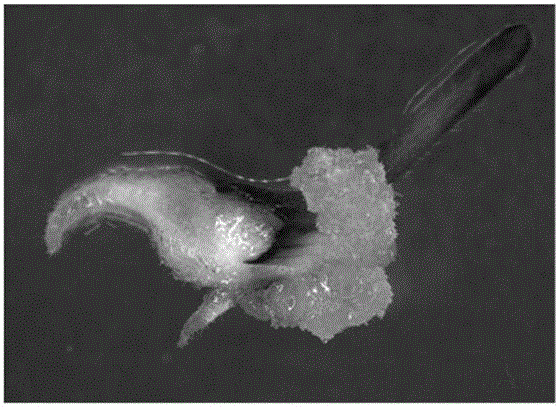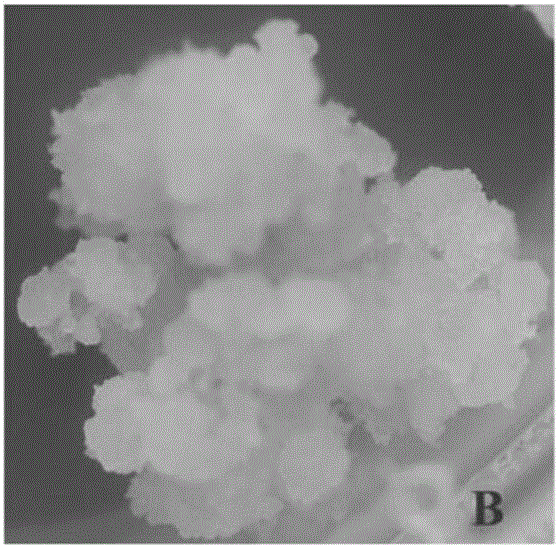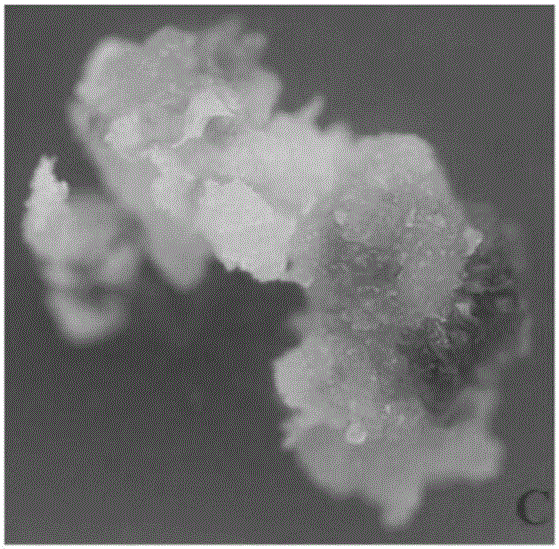Method for inducing dendrocalamus latiflorus stem apex calluses and obtaining regeneration plants
A technique for callus and plant regeneration, applied in botany equipment and methods, plant regeneration, horticultural methods, etc., can solve the problems of limited material collection, low feasibility, and difficult access to seeds
- Summary
- Abstract
- Description
- Claims
- Application Information
AI Technical Summary
Problems solved by technology
Method used
Image
Examples
Embodiment 1
[0021] A method for inducing callus at the stem end of bamboo shoots and obtaining a regenerated plant, comprising the following steps:
[0022] (1) Selection of explants: Take young shoots of perennial bamboo shoots as explants, rinse with running water for 3 hours, disinfect the surface with 70wt% ethanol for 45 seconds, rinse with sterile water for 4 times, and then use 0.1wt% ethanol Mercury chloride shock disinfection, the disinfection time is 8 minutes, rinsed with sterile water 8 times; finally use sterile paper to dry the surface water, and use it as an explant for later use;
[0023] (2) Induction culture and proliferation culture of callus: Cut the sterile explants obtained in step (1) into small pieces of 0.5 cm, put them on the callus induction medium, and culture them in the dark for 30 days. The wound tissue began to form; the induced callus showed various states, and the light yellow and dense embryogenic callus was isolated, inoculated on the proliferation medi...
Embodiment 2
[0032] A method for inducing callus at the stem end of bamboo shoots and obtaining a regenerated plant, comprising the following steps:
[0033] (1) Selection of explants: Take young shoots of perennial bamboo as explants, rinse with running water for 2 hours, disinfect the surface with 70wt% ethanol for 45 seconds, rinse with sterile water for 5 times, and then use 0.1wt% ethanol Mercuric chloride shock disinfection, the disinfection time is 8 minutes, rinsed with sterile water 10 times; finally use sterile paper to dry the surface water, and use it as an explant for later use;
[0034] (2) Induction culture and proliferation culture of callus: cut the sterile explants obtained in step (1) into 1 cm segments, put them on the callus induction medium, and culture them in the dark for 40 days. The wound tissue began to form; the induced callus showed various states, and the light yellow and dense embryogenic callus was isolated, inoculated on the proliferation medium, and cultur...
Embodiment 3
[0043] A method for inducing callus at the stem end of bamboo shoots and obtaining a regenerated plant, comprising the following steps:
[0044] (1) Selection of explants: Take young shoots of perennial Bamboo bamboo as explants, rinse with running water for 3 hours, disinfect the surface with 70wt% ethanol for 45 seconds, rinse with sterile water for 3 times, and then use 0.1wt% ethanol Mercury chloride shock disinfection, the disinfection time is 8 minutes, rinsed with sterile water 8 times; finally use sterile paper to dry the surface water, and use it as an explant for later use;
[0045] (2) Induction culture and proliferation culture of callus: Cut the sterile explants obtained in step (1) into 0.8 cm segments, put them on the callus induction medium, and culture them in the dark for 35 days. The wound tissue began to form; the induced callus showed various states, and the light yellow and dense embryogenic callus was isolated, inoculated on the proliferation medium, and...
PUM
 Login to View More
Login to View More Abstract
Description
Claims
Application Information
 Login to View More
Login to View More - R&D Engineer
- R&D Manager
- IP Professional
- Industry Leading Data Capabilities
- Powerful AI technology
- Patent DNA Extraction
Browse by: Latest US Patents, China's latest patents, Technical Efficacy Thesaurus, Application Domain, Technology Topic, Popular Technical Reports.
© 2024 PatSnap. All rights reserved.Legal|Privacy policy|Modern Slavery Act Transparency Statement|Sitemap|About US| Contact US: help@patsnap.com










